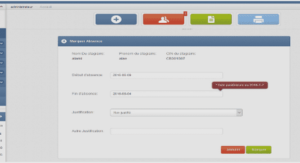The conventional topology of current cellular networks is a star structure, where central control points usually serve as base stations. This provides the advantage of simplicity of the architecture while still providing quality of service (QoS) guarantees. However, for nextgeneration networks, this topology will be disadvantageous and difficult to use due to the insufficient availability of network access. This high dependency on the central node has its own drawbacks including inefficient offload, since all user data needs to go through the central node network. This topology also cannot offer performance and energy efficiency for users on the edge of cell coverage (“edge users”). Thus, the next-generation cellular network topology needs to be optimized, and relay will play an important role in this.
In the next-generation cellular network, cellular networks will be able to include different kinds of relays. Due to the use of relaying technologies into the centrally controlled star network, different kinds of connections—such as user equipment (UE) to UE, relay station (RS) to RS, and base station (BS) to RS—can thus be established. The hybrid topology radio network will thus naturally be the future mobile access network, which can help to overcome current and future difficulties and challenges in an efficient manner.
Relay technology is also promising in Internet of Things (IoT) applications. In IoT, relaying can have many more functions in a cellular network, such as improving the topology of the cellular network, improving the robustness of a network, and decreasing power consumption. In addition, a multi-hop topology can efficiently support tremendous access for fog computing and social networking services.
The capacity offered by a macro cell is not uniformly distributed across its coverage areas in today’s LTE network. From a user’s perspective, proximity to the cell center thus should result in much higher throughput and larger battery savings (due to reduced transmission power) than cell edge users. The 3GPP has standardized and begun supporting LTE relays in Release 10, with no impact on UE design and implementation. “Relay stations” are defined as low-power nodes that can be deployed underneath macro BSs, forming small cells to address the need for coverage and capacity improvements. One of the most attractive features of 3GPP relays is the LTE-based wireless backhaul (i.e., “self-backhauling”), as this can provide a simple deployment technique to improve coverage to dead zones (e.g., at cell edges) and, more importantly, traffic hot zones (Bhat et al., 2012). Communication between BSs and RSs is similar to the conventional communication between BSs and UEs, in which communication is accomplished via a point-to-multipoint (PMP) connection; this creates multiple paths from a BS to different RSs, and a RS can also establish PMP connectivity with the UEs. In the following, we denote the user connected to RS by R-UE and those connected directly to Macro BS by M-UE (BenMimoune, Khasawneh, Kadoch, Sun, & Rong, 2014).
Relay classification
Relays can be classified based on several characteristics, such as operation layers, duplexing, and the resources assignment scheme, all described below.
Classification based on layers
In this form, relay classification is based on the layers of the protocol stack in which their main functionality is performed. There are three main types:
• a layer 1 relay, also called a “booster” or “repeater,” takes the received signal, amplifies it, and forwards it to the next hop, which may be another relay or UE. As its name implies, it works only at the physical layer. Although the advantage of this type is that they are inexpensive and simple, with minimum impact on the existing standard, they amplify noise simultaneously with the desired signals.
• a layer 2 relay, called a “decode and forward” relay, can eliminate noise signals and perform radio resource management compared to layer 1 relay; a better throughputenhancement effect thus can be expected. However, due to the extra functions performed by a layer 2 relay, a significant processing delay is introduced, due to modulation/demodulation and encoding/decoding functions.
• a layer 3 relay, also called a “decode and forward” relay, can be thought of as a BS that uses a wireless rather than wired link for backhaul. A layer 3 relay can improve throughput by eliminating inter-cell interference and noise. However, this type of relay has an impact on standard specifications, in addition to the delay caused by modulation/demodulation and encoding/decoding processing.
Classification based on duplexing schemes
In general, a relay station communicates through two links: with its donor base station on one hand (through the backhaul link) and its connected users on the other (through the access link). The relay station can use either a time division duplex (TDD) or a frequency division duplex (FDD) scheme in these communications.
In a basic TDD scheme, the downlink and uplink frames of the BS–RS and RS–UE links are usually not enabled simultaneously.the two hop downlink transmissions occur in the first and second time slots, respectively, followed by the two hop uplink transmissions in the third and fourth time slots, respectively. We can see that only one station can transmit/receive at each time slot. Because better utilization can be achieved if more than one station can transmit/receive at each time slot .
Classification based on resources assignment
Relay nodes can be classified into inband and outband relay stations, according to the spectrum used for the backhaul link. In the inband case, the backhaul link between the BS and RS shares the same carrier frequency with the RS–UE links. The backhaul link, in contrast, uses a separate frequency band for the outband case.
3GPP classification
The 3GPP’s LTE-A standards have defined two types of RSs: type-I and type-II relay, also called “non-transparent” and “transparent” relay, respectively (Yang, Honglin, Jing, & Guoqiang, 2009). Relay classification is based on the relay’s ability to generate its own cell control message (Kanchei et al., 2010).
• Type-I (non-transparent) relay is usually responsible for assisting UEs that are distant from the base station and out of cell coverage range. Thus, a type-I relay will generate its own cell control messages to extend the signal and service coverage, while improving the overall system capacity.
• Type-II (transparent) relay is responsible for helping UEs within the coverage area of the BS. Although the UE can communicate directly with the BS, the deployment of type-II RS can help to improve its service quality and link capacity. Since this type of relay is a part of the donor cell, cell control messages are not necessary in this case to improve the overall system.
INTRODUCTION |




